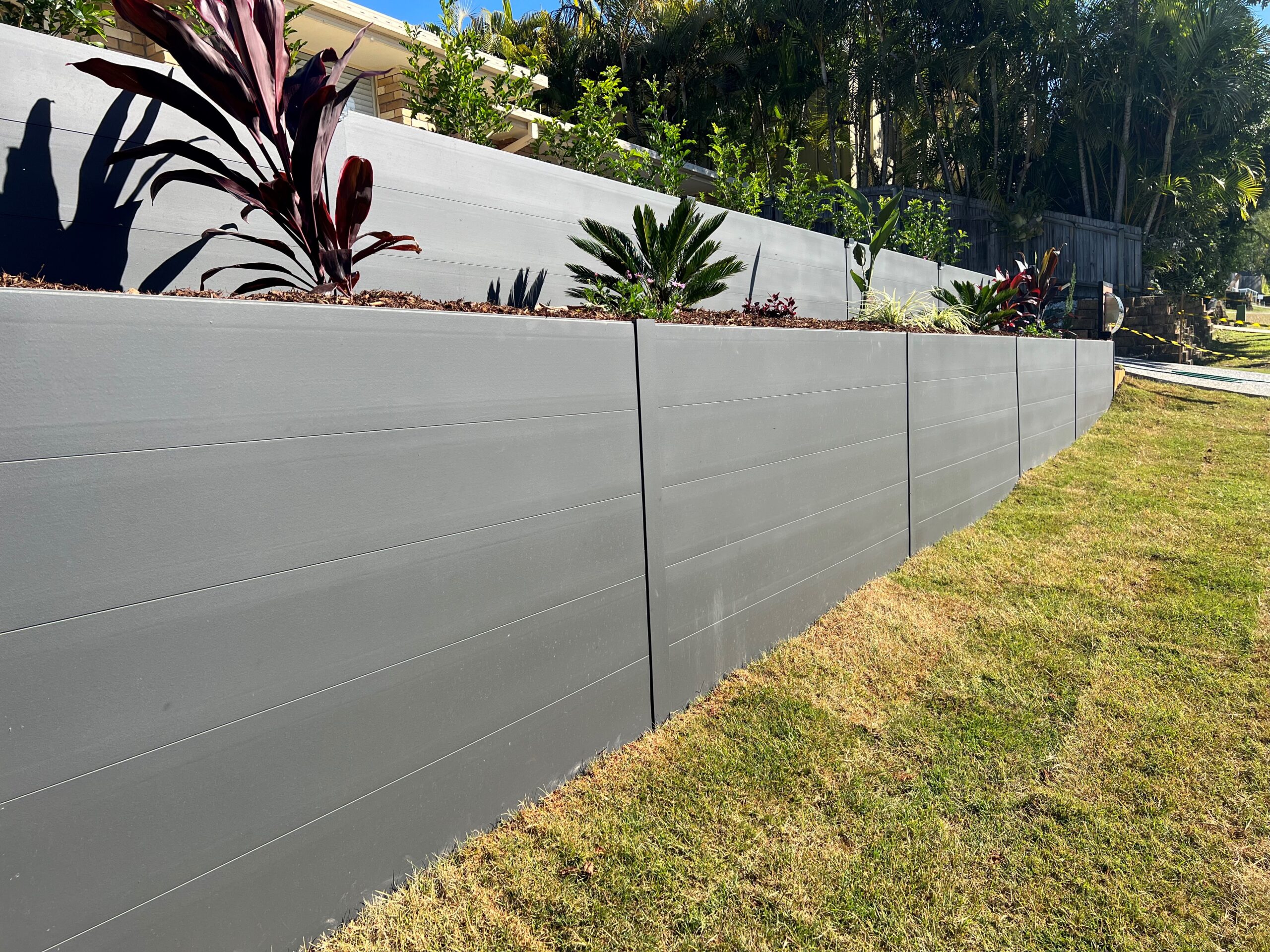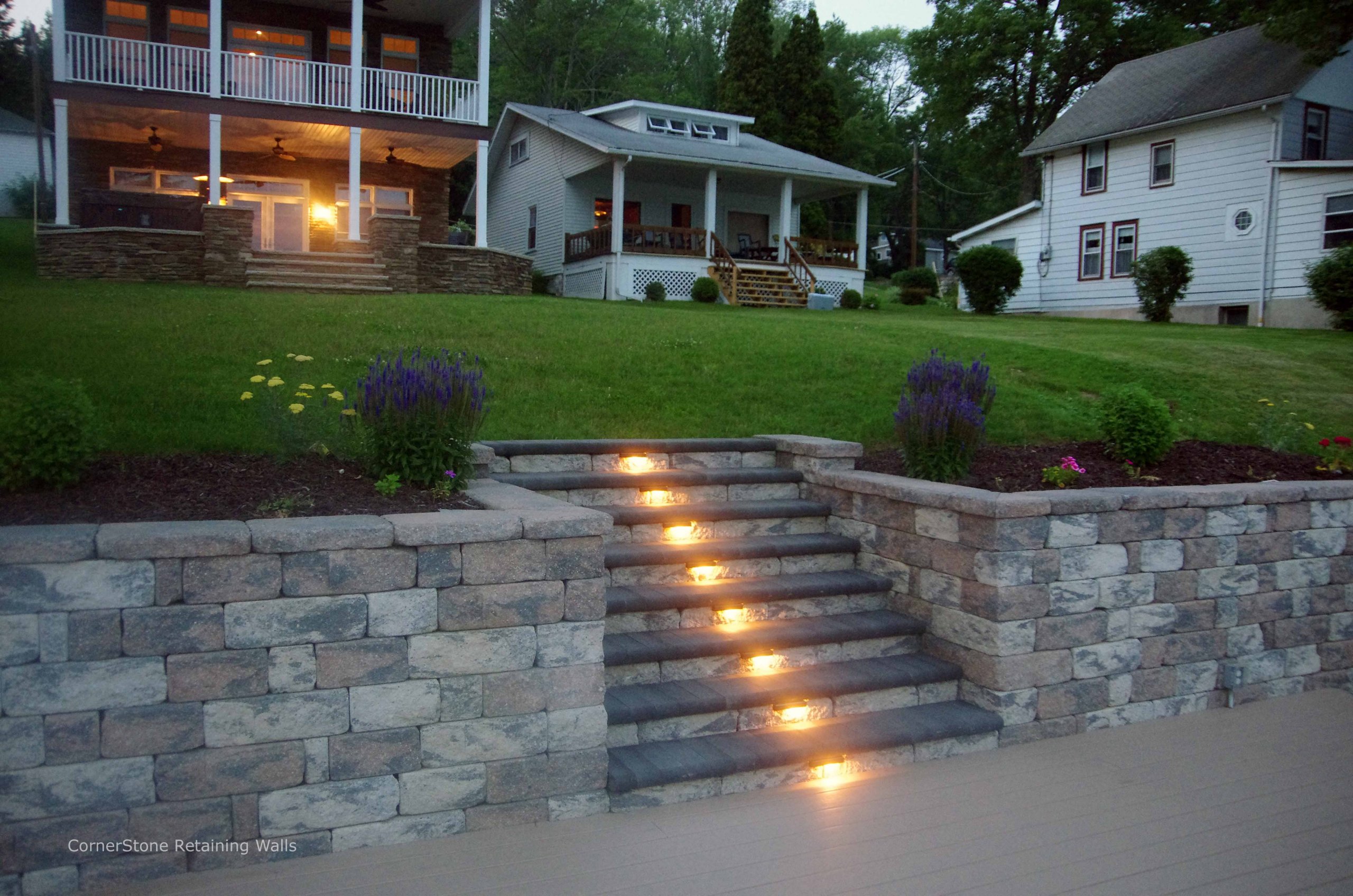Exactly How Customized Retaining Walls Sunshine Coast Can Enhance Your Landscape Design
Exactly How Customized Retaining Walls Sunshine Coast Can Enhance Your Landscape Design
Blog Article
Making Certain Structural Honesty: The Value of Appropriately Created Keeping Wall Surfaces in Preventing Incline Failure
In the world of civil engineering and building and construction, the significance of correctly constructed keeping walls in preventing incline failure can not be downplayed. By checking out the intricate interaction between these components, a much deeper comprehension of the pivotal role that preserving wall surfaces play in protecting architectural integrity and protecting against incline failing emerges.
Function of Retaining Walls in Security
The indispensability of retaining walls in ensuring incline security is paramount in civil design practices. Preserving wall surfaces offer a vital duty in preventing soil disintegration, managing water drainage, and maintaining the architectural stability of inclines. By sustaining vertical or near-vertical grade adjustments, maintaining wall surfaces help to rearrange side pressure applied by the dirt, thus reducing the danger of incline failing.
One secret feature of keeping wall surfaces is to counteract the pressure of gravity acting upon the soil mass behind them. This is achieved with correct layout and building, which considers elements such as soil kind, wall surface height, drain arrangements, and potential surcharge loads. By efficiently keeping dirt within specified limits, these frameworks assist to support inclines and protect against landslides.
Furthermore, keeping walls add to the looks of landscapes while providing functional advantages. They can create terraced levels for landscaping, assistance roadways or frameworks on hills, and boost the total usability of sloped terrain. Fundamentally, keeping wall surfaces play an essential role in keeping slope stability and guaranteeing the safety and security and durability of civil design projects.
Elements Affecting Wall Surface Effectiveness
Elements that influence the efficiency of preserving wall surfaces include dirt residential properties, wall layout, and exterior tons. Appropriate wall design considers elements like wall surface elevation, wall kind (e.g., gravity wall surfaces, cantilever walls), support materials, water drainage systems, and building and construction methods to guarantee the wall surface can withstand the lateral pressure put in by the preserved soil. By taking into consideration these factors adequately, engineers can create maintaining wall surfaces that efficiently prevent incline failure and ensure long-term architectural integrity.
Style Considerations for Preserving Walls
Incorporating the important facets of soil properties and external loads right into the structural design process is vital for establishing reliable preserving walls that ensure incline stability. When designing keeping wall surfaces, engineers have to carefully review the qualities of the bordering soil, including its type, water drainage, and compaction buildings. Comprehending these dirt buildings is essential for identifying the proper wall surface density, reinforcement, and elevation required to stand up to the lateral pressure put in by the soil mass.
Furthermore, external loads such as additional charge loads from neighboring frameworks or web traffic, as well as seismic forces, should be thought about throughout the design stage. These loads can considerably impact the security and efficiency of a retaining wall, demanding the usage of proper design strategies and products to reduce prospective failing risks.
In addition, the selection of appropriate products, such as concrete, rock, or lumber, ought to line up with the aesthetic demands and site-specific conditions. Element of security considerations, drainage provisions, and construction techniques are also essential elements that influence the total design and capability of preserving wall surfaces in preventing slope failing. By very carefully taking into consideration these style considerations, engineers can guarantee the architectural integrity and long-term security of retaining walls.

Building And Construction Best Practices for Sturdiness
When creating keeping walls for ideal toughness and longevity, adherence to industry-standard methods and precise focus to information are critical. To ensure the sturdiness of a maintaining wall, proper site preparation is vital.
Integrating visit this web-site reinforcement strategies, such as geogrids or steel bars, can improve the structural integrity of the retaining wall and prevent prospective failures. By complying with these construction best practices, retaining wall surfaces can stand up to the test of time and effectively protect against slope failing.
Relevance of Correct Maintenance
Regular maintenance is important for maintaining the architectural stability and functionality of maintaining walls gradually. Disregarding upkeep can result in issues such as erosion, splits, and even full failing of the wall surface, jeopardizing the security of the slope it sustains. To make sure that keeping wall surfaces proceed to execute their desired function efficiently, routine evaluations should be conducted to recognize any kind of indications of deterioration. These assessments can help in detecting early indication of possible problems, permitting prompt repairs to be performed prior to the issues escalate (Retaining Walls Sunshine Coast).

Conclusion
To conclude, keeping wall surfaces play a critical role in making sure architectural integrity and preventing incline failing. By thinking about elements influencing wall surface performance, adhering to design considerations, adhering to building and construction finest practices, and executing appropriate upkeep, the resilience of preserving wall surfaces can be made best use of. Retaining Walls Sunshine Coast. It is important to recognize the relevance of appropriately constructed preserving wall surfaces in maintaining stability and preventing possible dangers related to incline failure
Aspects that influence the effectiveness of keeping walls consist of soil residential properties, wall surface style, and outside tons. Appropriate wall surface design thinks about aspects like wall surface height, wall kind (e.g., gravity wall surfaces, cantilever walls), support materials, water drainage systems, and building and construction methods to make their website sure the wall surface can you can find out more stand up to the side pressure applied by the preserved soil. By considering these variables comprehensively, designers can create retaining wall surfaces that properly avoid incline failing and ensure lasting architectural integrity.
Upkeep jobs might consist of clearing drain systems to avoid water build-up behind the wall surface, fixing any visible fractures or damages, and guaranteeing that the wall is complimentary from plant life that can apply stress on the structure. By considering variables affecting wall surface effectiveness, sticking to design factors to consider, complying with construction best practices, and carrying out proper upkeep, the durability of maintaining walls can be taken full advantage of.
Report this page